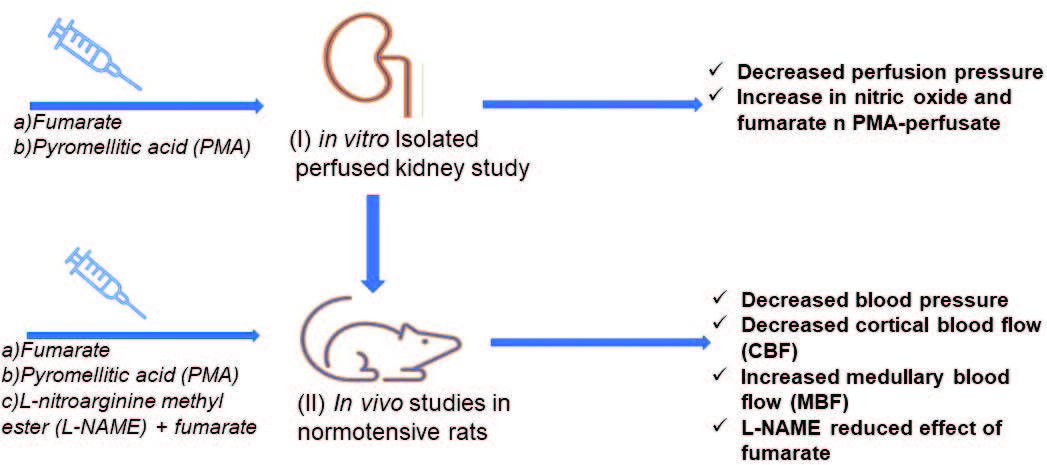Effects of fumarate on renal vascular reactivity and the modulation of blood pressure in normotensive rats: Possible contribution of the nitric oxide synthase-nitric oxide system
DOI:
https://doi.org/10.3897/rrpharmacology.8.79765Abstract
Introduction: Fumarate, the tricarboxylic acid (TCA) cycle intermediary, has been linked to nitric oxide (NO) production. NO plays a prominent role in the physiological regulation of blood pressure and renal hemodynamics. This study is aimed to investigate any contribution of fumarate to blood pressure and renal hemodynamics in normotensive rats with a possible link to the nitrergic system.
Materials and methods: Fumarate (1, 3 and 10 μmol) was injected into isolated perfused kidneys, pre-constricted with epinephrine (30 μM). The fumarase inhibitor, pyromellitic acid (PMA) (1, 3 and 10 μM), was used to perfuse the isolated kidney and perfusate was collected for nitric oxide and fumarate assays. An acute blood pressure study involved the injection of bolus doses of fumarate (0.1, 0.3 and 1 μg/kg, iv) or PMA (1, 3 and 10 μg/kg, iv) to normotensive rats in the presence of N(ω)-nitro-L-arginine methyl ester (L-NAME) (10 mg/kg, iv) or PMA (1, 3 and 10 μg/kg).
Results and discussion: Fumarate reduced perfusion pressure and elicited a peak reduction at the highest dose. Perfusing the kidney with PMA caused a paradoxical increase in perfusion pressure (70%, p<0.05), compared to baseline. Bolus doses of fumarate reduced blood pressure (-29.3±6.2 mmHg, p<0.05), cortical blood flow (CBF) and increased medullary blood flow (MBF). L-NAME did not abolish the vasodilatory effect of fumarate, but reduced the magnitude of response (50%, p<0.05). PMA did not significantly affect the vasodilatory effect of fumarate (p>0.05).
Conclusion: These data suggest that fumarate exerts a vasodilatory effect on renal and systemic hemodynamics that may partly involve the nitric oxide signaling.
Grapgical abstract:
 Русский
Русский
 English
English

